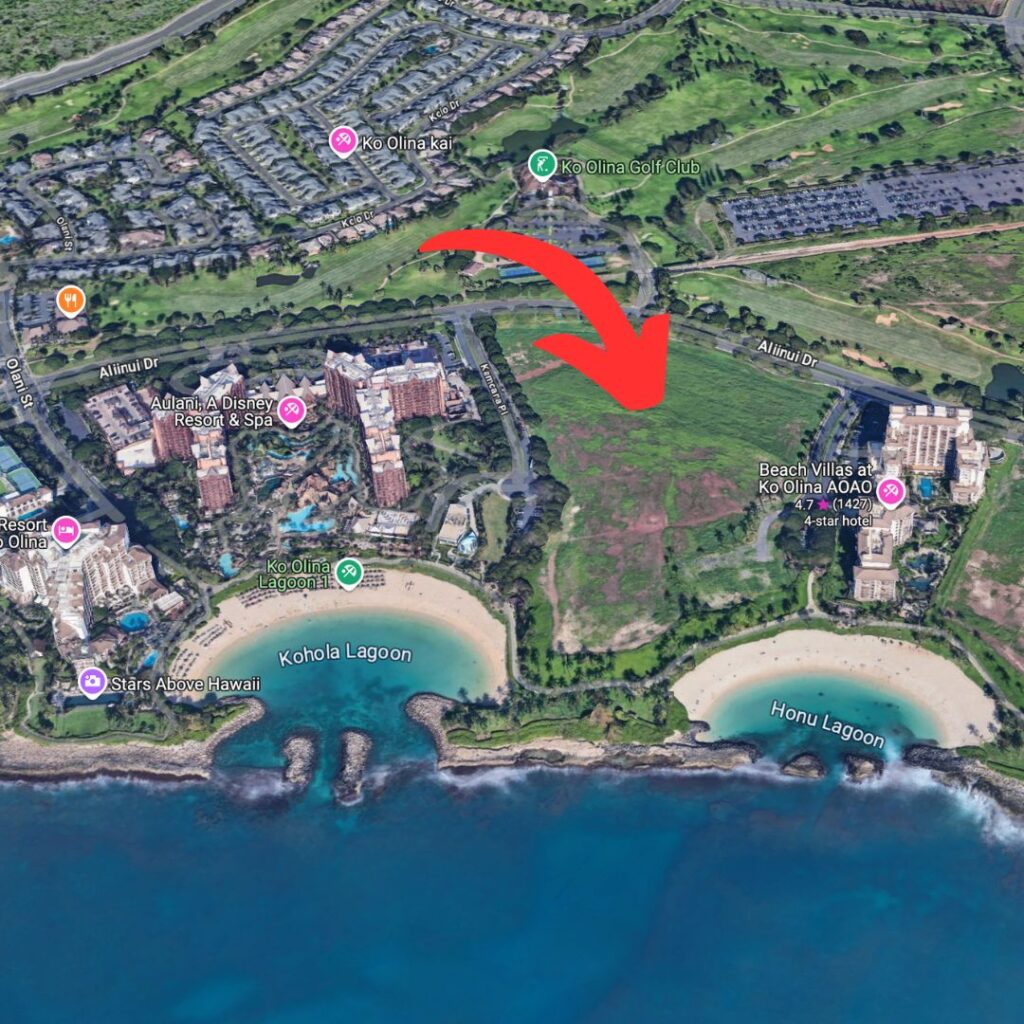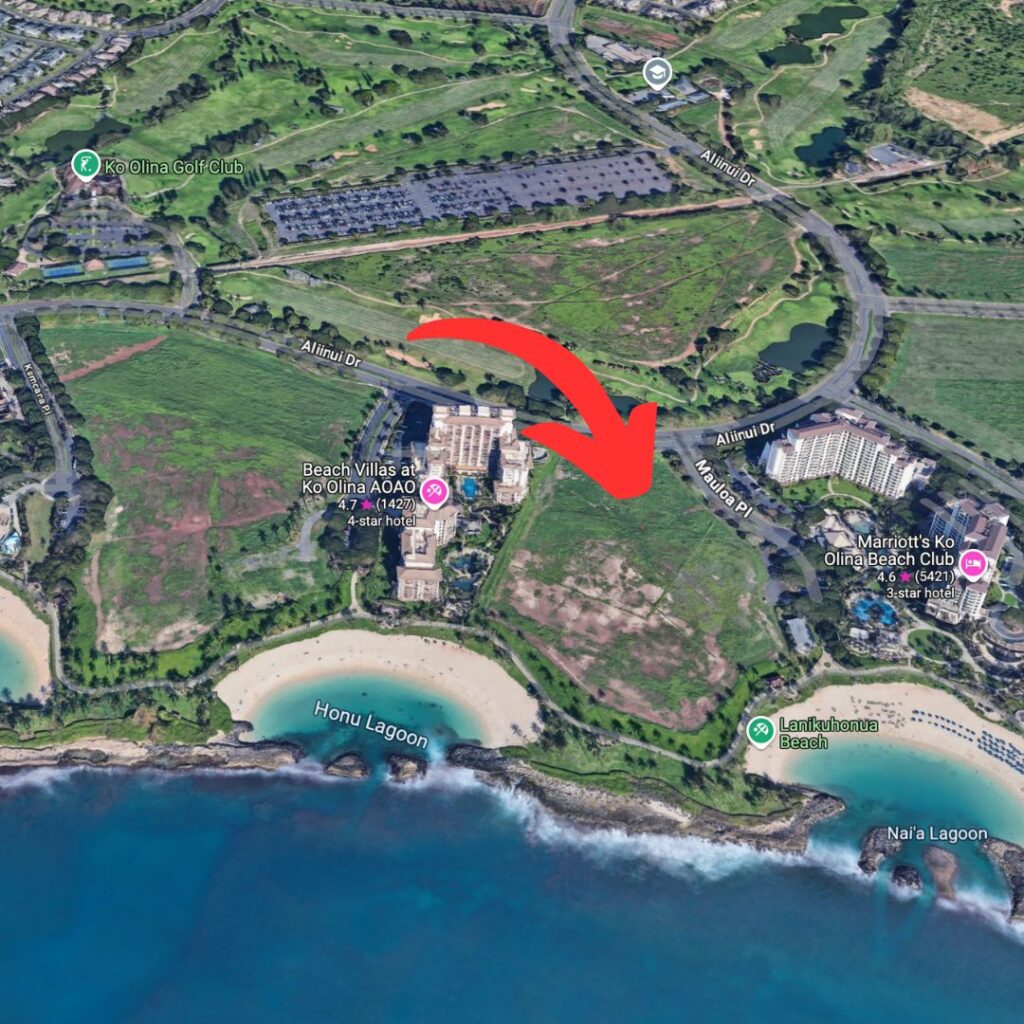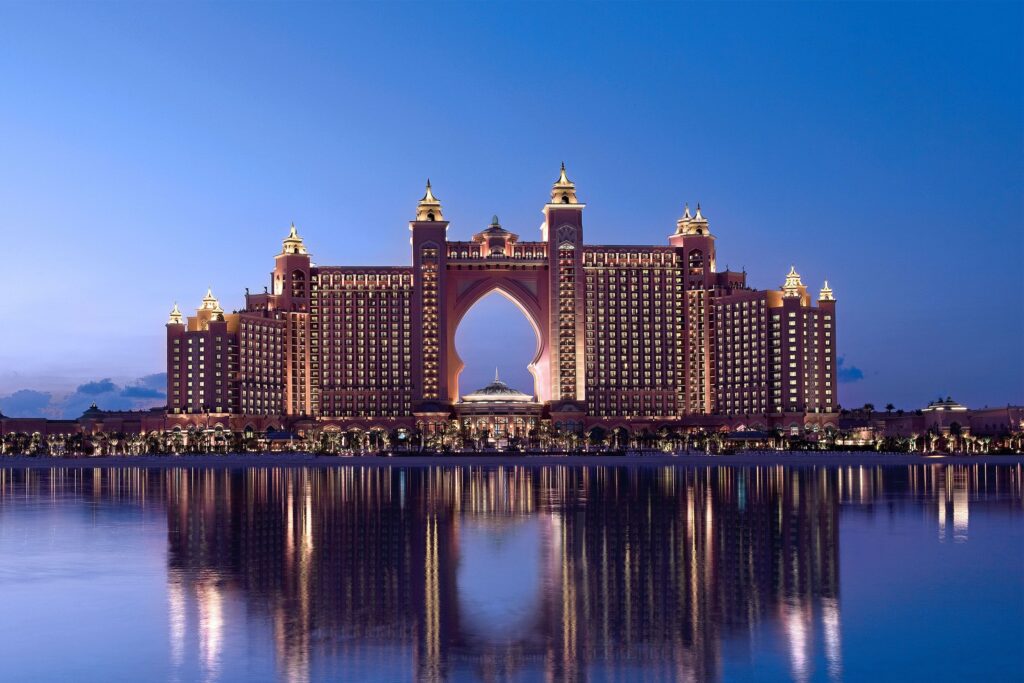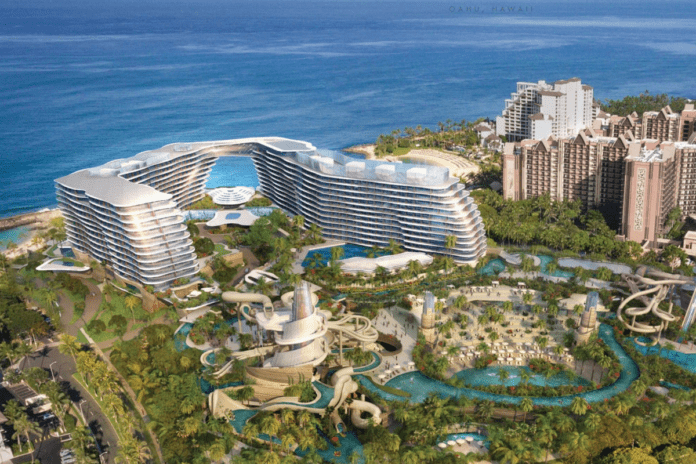The long-discussed Atlantis Resort at Ko Olina is once again in the spotlight.
“Atlantis is back on the menu boys!”
This time, California-based real estate developer Kam Sang Co. Inc. is stepping up with plans to turn a 26.3-acre oceanfront parcel in Ko Olina into a stunning resort and residential destination. As first reported by Pacific Business News, the project comes with an estimated $2 billion price tag, marking it as one of the most ambitious developments Hawai‘i has seen in recent years.

This isn’t the only hotel project making waves on O‘ahu. Over in Ewa Beach, plans for a new Hyatt hotel are also gaining momentum, with financing recently approved. I wrote about that development here.
The Bold Vision for Atlantis at Ko Olina
Plans for the resort include approximately 500 hotel rooms and 500 condominium units, designed to cater to affluent travelers and homeowners seeking a blend of exclusivity and natural beauty.

The property, situated between Aulani, A Disney Resort & Spa, and the Beach Villas at Ko Olina, promises world-class amenities that align with Atlantis Resorts’ reputation for luxury.
Kam Sang Co., which acquired the parcels from China Oceanwide for $216 million, is working with Kerzner International, the owner of the Atlantis brand. The two entities have signed a 25-year hotel management agreement to bring the first-ever Atlantis Resort to the United States.
While the vision for Atlantis is undeniably grand, it raises important questions about Hawai‘i’s ability to balance large-scale development with its cultural and environmental values.
A History of Setbacks and Challenges
The journey of the Atlantis Resort project at Ko Olina has been anything but smooth.
Initially announced by China Oceanwide in the mid-2010s, the $2 billion mega-resort was envisioned as a transformative addition to Hawai‘i’s luxury tourism sector. However, as reported by Skift, the ambitious project encountered significant financial and operational hurdles that ultimately led to its abandonment.
However, despite the fanfare surrounding the announcement, the project quickly hit roadblocks. China Oceanwide faced mounting financial difficulties, exacerbated by changing global economic conditions and internal corporate struggles.
The company eventually abandoned its plans for Ko Olina, and the parcels sat undeveloped for years.
The Atlantis Resort project, in particular, has also been clouded by concerns over its scale and impact. Some community members and environmental advocates questioned whether Hawai‘i could sustain such a massive influx of visitors without exacerbating existing issues like overcrowding, strain on infrastructure, and environmental degradation.
The “Second” Hotel: Expanding Ko Olina’s Luxury Offerings Beyond Atlantis
Alongside the Atlantis Resort, Kam Sang Co. is planning a second hotel on a 17.3-acre parcel between the Beach Villas at Ko Olina and Marriott’s Ko Olina Beach Club. This property will feature 250 hotel rooms and 250 vacation-stay units, adding to the area’s luxury offerings.

Potential partners for the hotel include renowned brands like Regent, Mandarin Oriental, St. Regis, Waldorf Astoria, and Fairmont. Designed as a quieter complement to Atlantis, it aims to attract guests seeking a more intimate luxury experience.
Both the Atlantis Resort and this hotel will be developed concurrently, with a combined five-year timeline and a total investment of $2.5 billion. Developers must address infrastructure and environmental concerns to align with Hawai‘i’s sustainability goals.
Among the standout properties in Ko Olina are the Marriott’s Ko Olina Beach Club and the Four Seasons Resort O‘ahu. These iconic resorts have set a high standard for luxury in the region, offering upscale amenities, exquisite dining, and breathtaking views of the Pacific. Their success has positioned Ko Olina as a hub for discerning travelers, making it a natural location for the proposed Atlantis Resort.
However, the addition of another mega-resort raises concerns about the region’s capacity to accommodate further development.
Atlantis Resorts Around the World: A Legacy of Luxury
The Atlantis brand is globally recognized for its extravagant resorts that redefine luxury and set new benchmarks in hospitality. Perhaps the most famous example is Atlantis, The Palm, located on the iconic Palm Jumeirah in Dubai. This architectural marvel, shaped like a mythical palace rising from the sea, has become a symbol of opulence and innovation.

Atlantis, The Palm features over 1,500 guest rooms, award-winning restaurants helmed by celebrity chefs, and an expansive waterpark, Aquaventure, which ranks among the best in the world. It’s not just a resort—it’s an entertainment hub that attracts millions of visitors annually.
Similarly, Atlantis Paradise Island in The Bahamas is another flagship property known for its immersive marine habitats and luxurious accommodations.
In Hawai‘i, the proposed Atlantis Resort at Ko Olina aims to bring this same level of grandeur while tailoring the experience to the islands’ unique culture and environment.
However, unlike Dubai or The Bahamas, Hawai‘i faces distinct challenges, including stricter environmental regulations, limited infrastructure, and a community highly attuned to the importance of preserving natural and cultural resources.
Is Hawai‘i Ready for a Project of This Scale?
Infrastructure concerns loom large.
Hawai‘i’s infrastructure is already under significant pressure. O‘ahu’s roads are congested, water resources are limited, and waste management systems struggle to keep up with existing demands. Adding a massive resort like Atlantis, along with its planned second hotel, risks further straining these systems, potentially creating lasting issues for residents and visitors alike.
Tourism in Hawai‘i, while vital to the economy, has long been a source of tension. It generates billions annually and supports thousands of jobs, yet it also depletes natural resources, fuels overcrowding, and raises concerns about overtourism. Large-scale projects like Atlantis often reignite these debates, with residents questioning how much development the islands can sustain.
Culturally, the stakes are equally high. Critics worry that a project of this magnitude could commercialize Hawai‘i’s heritage, undermining its cultural integrity. Activists and cultural practitioners stress that new developments must align with mālama values—caring for the land, sea, and people—and avoid exploiting the islands’ culture for profit.
Economically, the project promises significant benefits, including construction jobs, long-term employment opportunities, and increased tax revenue. Its luxury appeal could attract high-spending visitors, bolstering the state’s tourism sector. However, these potential gains must be weighed against the social, environmental, and cultural costs.
The question remains: can Hawai‘i support another mega-resort without compromising its future?
What’s Next for the Atlantis Ko Olina Project?
The Atlantis Resort project at Ko Olina has a history marked by bold aspirations and significant challenges. As Kam Sang Co. works to revive the stalled development, it inherits a legacy of ambitious plans and financial hurdles. Understanding the historical timeline of past attempts provides valuable context for where the project stands today and what might lie ahead.
Below is a detailed timeline outlining the history of the Atlantis Ko Olina project, from its initial conception to the current revival efforts:
| Year | Milestone | Status |
|---|---|---|
| 2015–2016 | China Oceanwide acquires Ko Olina parcels for $424M | Completed |
| Mid-2010s | Initial plans for Atlantis Resort announced | Stalled due to financial issues |
| 2024 | China Oceanwide liquidates Ko Olina properties | Completed |
| 2025 | Kam Sang Co. acquires Ko Olina parcels for $216M and revives Atlantis project | In progress |
| 2026 (Projected) | Begin construction of Atlantis Resort | Pending |
| 2029–2030 (Projected) | Expected completion of Atlantis Resort | Pending |
Moving forward, the next steps involve navigating Hawai‘i’s rigorous regulatory processes, including environmental impact assessments and community consultations. While Kam Sang Co.’s track record in luxury hospitality is a promising sign, the scale of the Atlantis Resort and the challenges unique to Hawai‘i present significant hurdles.
If the project stays on track, the Atlantis Resort could begin construction within the next year or two and open its doors by the end of the decade.











Locals will let that monstruosity happen and then blames Airbnbs for too many tourists and not enough parking spots at their local beach. Under their watch, they let the transformation of paradise into yet another Orlando / Jeju / Ibiza / Denpasar. The only thing yet missing is Spirit planes.
The only decent island left is Molokai.
We truly are lacking leadership here that is not under a political parties thumb. The time to engage with the Atlantis project in Ko Olina is now so we have a seat at the table. Protesting after these things are built means we are missing the boat, again.
I would laugh at your Spirit comment but with Breeze eyeing potential Hawai’i flights it is scarily accurate.
Kauai is pretty nice and “relatively” low key.. especially the North side.
@Minos: Big Island not so crowded, Braddah.
@ Brandon: Nice article. As for the Atlantis brand, they’d better hope people associate it with the Dubai one and not the original Nassau location. The latter has become known for poor service, deferred maintenance, nickel and diming in the extreme, and overall low value.
Aloha Lars,
Did not know that about the Nassau location, will keep an eye on that. I hear lots of chatter about the Dubai location and most seems quite positive. We shall see.
My wife & I lived in Ko Olina when they broke ground on A’ulani. We were there when they opened it in 2012 and again when Stone bought building, closed JW Marriott and reopened as Four Seasons. Lagoon one was ruined. Lagoons 2 & 3 will be ruined as well by these developments. Traffic will be horrendous. No thanks braddah. Glad we left when we did.
but..but..the rail.
With that many rooms, for both lots, the traffic within Ko Olina itself will be next level. That short on-ramp onto the freeway will also see some challenges. I do hope they are looking at how the lagoons will hold up with that many more rooms in the area.
We vacation to the Beach Villas, their value just sunk with this announcement. 2000 keys plus the Beach Villas will put upwards of 6000 people on Honu Lagoon which is smaller than the two others with . This will destroy Ko’Olina.
Agree. They are going to have to address several things with this type of development. Water, sewage, transit, parking, shoreline impact, probably a dozen other things I am unaware of. Following this will be interesting.